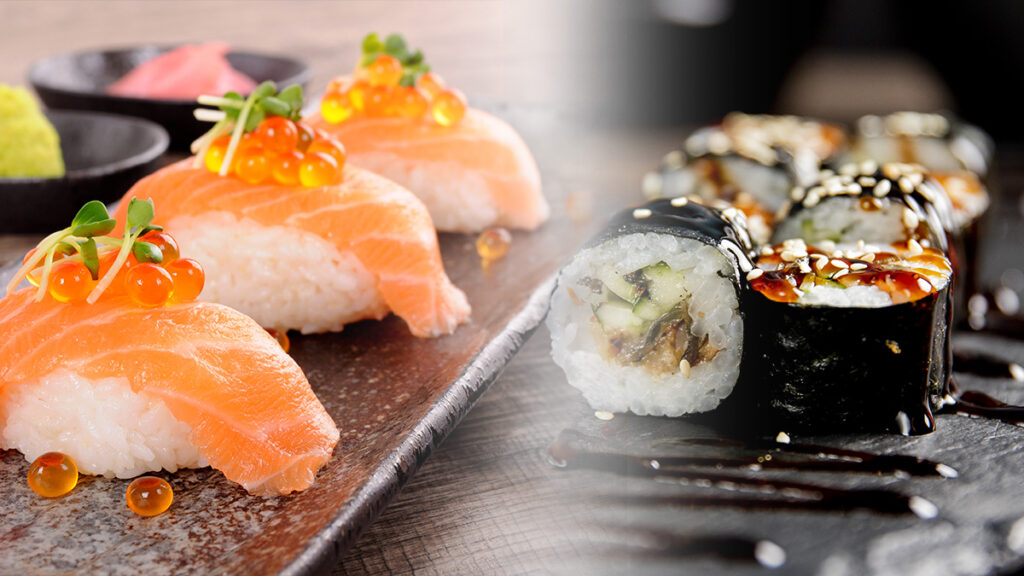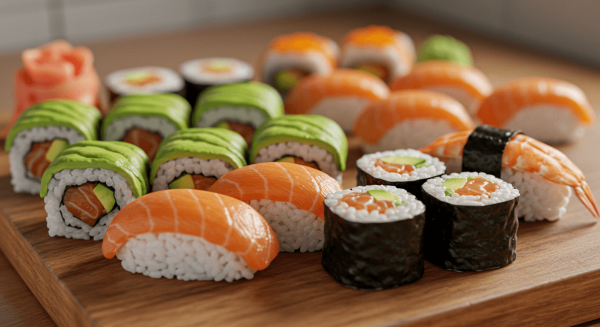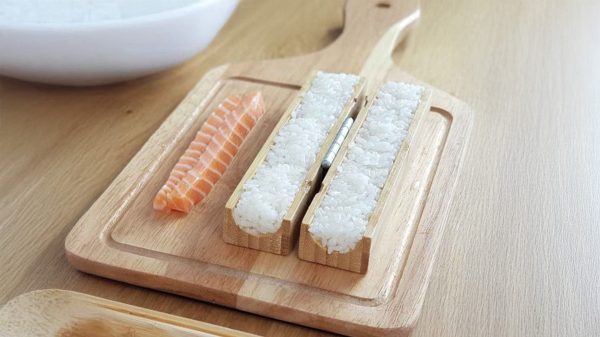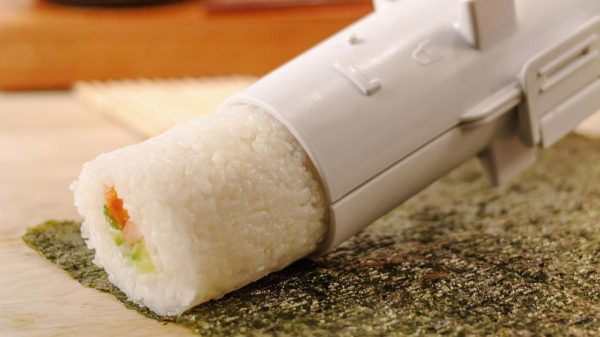Sushi vs Maki: differences between these two emblematic dishes

Welcome to this captivating article that will take you on a culinary journey into the heart of Japanese gastronomy. Today, we'll dive into the delicious world of sushi and maki, two iconic dishes that have conquered palates around the world. Although often confused, these Japanese delicacies have each their own distinct character and unique features. Discover the secrets of their preparation, their culinary differences and how to taste them for an unforgettable taste experience. Fasten your seatbelts for a savory feast of knowledge and flavors!
1 – Origins and history of sushi and maki
To fully understand the difference between sushi and maki, it is essential to delve into their fascinating history. These two dishes indeed have ancient origins and are deeply rooted in the culinary culture of Japan.
Sushi, known for its harmonious blend of vinegared rice and raw fish, dates back more than a millennium. Originally, they were prepared as a way to keep fish fresh by fermenting it with rice. This preservation method has evolved over time to become a true gastronomic delicacy appreciated by the Japanese and the rest of the world.
The makis, on the other hand, appeared later, around the 18th century. It is said that sushi chefs began wrapping fish and rice in seaweed, also called nori, to make them easier to eat. This technique was adopted to create convenient meals to take on trips. Thus, maki quickly became popular throughout Japan and beyond.
Over the centuries, these two dishes have evolved, adapting to the preferences and tastes of different regions of Japan. Their popularity has grown globally thanks to their unique combination of flavors and textures.
Immerse yourself in this rich and captivating culinary history to better appreciate the subtle nuances that distinguish sushi and maki and make your mouth water as you discover how these two gastronomic marvels have become staples of modern Japanese cuisine.
2 – Ingredients and preparation: culinary differences
One of the main differences between sushi and maki is their ingredients and how they are prepared. Although both dishes use vinegar rice as a base, their compositions and blends are unique.
Sushi, true culinary gems, highlights the quality and freshness of the ingredients. They usually consist of a thin slice of raw fish, such as salmon, tuna or mackerel, delicately placed on a small ball of vinegared rice. Sometimes other seafood such as shrimp or sea urchins are also used. The simplicity of the preparation aims to enhance the natural flavors of the ingredients.
On the other hand, makis are tasty rolls that incorporate an assortment of ingredients. The rice is placed on a bamboo mat, covered with nori sheets and garnished with fresh vegetables, seaweed, raw or cooked fish, and various sauces and condiments. Everything is rolled into a compact cylinder and cut into small bite-size pieces, ready to eat.
In short, sushi emphasizes product quality and simplicity of assembly, while maki offers a variety of carefully harmonized ingredients in a roll of rice and seaweed. These subtle differences in the preparation give each dish its unique character and taste signature, revealing the creative aspects of Japanese cuisine.
Discover how Japanese culinary artisans have mastered the fine art of combining ingredients to create these two iconic gastronomic delights, each bringing its distinctive twist to Japanese culinary heritage.
3 – Shapes and presentation: two unique styles
In addition to their culinary differences, sushi and maki are also distinguished by their shapes and their presentation, adding an aesthetic dimension to their tasting.
Sushi, with its elegance and simplicity, is often presented in a minimalist way. The nigiri, for example, come in the form of small bites of vinegared rice with a thin slice of fish delicately placed on top. They are often accompanied by wasabi and pickled ginger, highlighting the purity of flavors and attention to detail. The careful presentation of the sushi is a real invitation to appreciate the finesse of the ingredients.
On the other hand, lemurs captivate with their bright colors and varied shapes. The rolls are often topped with various colorful ingredients, such as cucumbers, avocados, carrots or sesame seeds, creating a feast for the eyes. Cutting into small cylinders reveals the inner beauty of each maki, which becomes an artistic tableau on the plate. The maki thus offer a visual experience that is as captivating as it is tasty.
Whether to savor the delicacy of sushi or the visual brilliance of maki, each style of presentation invites you on a sensory journey to the heart of Japanese cuisine. Immerse yourself in this universe where creativity and aesthetics merge for you offer a unique and memorable dining experience.
Join us for a deeper exploration of the art of presenting these two iconic dishes, where the passion of Japanese chefs is reflected in every detail and your senses will be indulged in an explosion of flavors and colors.
4 – Accompaniments and tasting: how to savor them fully
Tasting sushi and maki is a culinary experience that is fully savored by combining delicate flavors with traditional accompaniments.
When enjoying sushi, condiments such as wasabi and pickled ginger are often served on the side to enhance the flavors. Wasabi, a bright green horseradish paste, adds a touch of heat to every bite, while pickled ginger provides a refreshing palette of flavors to cleanse the palate between different types of sushi. Soy sauce is also a faithful companion to sushi, but it is best used sparingly so as not to overwhelm the delicate flavors of the ingredients.
With maki, complementary sauces play a key role in tasting. The teriyaki sauce, sweet and savory, brings a rich depth of flavors, while the eel sauce, made with eel fish, adds a smoky and sweet kick. These sauces sublimate the ingredients of the maki and create a taste harmony between the different elements.
To fully savor these Japanese delights, adopt a delicate and balanced approach in your tastings. Take the time to savor each bite, letting the flavors blend subtly on your palate. Let yourself be carried away by the varied textures of sushi and maki, from the sweetness of raw fish to the crunchiness of vegetables. Appreciate the harmony between the vinegared rice and the ingredients for a complete taste experience.
Finally, feel free to explore different combinations of sushi and maki to discover your personal preferences. Each bite takes you on a unique culinary journey, where tradition and creativity meet to awaken your senses.
Whether you are a fan of traditional sushi or modern maki, the very essence of these emblematic dishes lies in the search for gustatory pleasure and the harmony of flavors. Taste them with curiosity and open-mindedness, and let yourself be enchanted by this refined Japanese cuisine that dazzles the taste buds all over the world.
Conclusion
In conclusion, sushi and maki are two iconic dishes of Japanese cuisine that captivate food lovers around the world. Their popularity lies in their elegant simplicity and harmony of flavors, which highlight the freshness of the ingredients and the art of presentation.
Although sushi and maki share similarities, including the use of vinegared rice and raw fish, they differ in their unique preparations and presentations. Sushi usually comes in individual portions, while maki is made up of several ingredients wrapped in nori sheets and rice.
The choice between sushi and maki will depend on your personal preferences and your desire to discover new flavors. Whether you opt for the elegant tradition of sushi or the creative audacity of maki, these Japanese delights promise an unforgettable taste experience.
And for lovers of Japanese cuisine who wish to venture into the art of preparing their own sushi and maki, Easy Sushi® is the perfect ally. This innovative and practical machine allows you to easily make sushi rolls and maki professionals in no time. Thanks to Easy Sushi, you can give free rein to your culinary creativity and concoct personalized creations that will amaze your guests.
Whether you're a novice or an expert in Japanese cuisine, Easy Sushi® makes preparing these authentic delicacies easy. In just a few simple steps, you'll be able to make sushi and makis worthy of a real chef. Practical and fun, Easy Sushi® makes the culinary experience even more enjoyable and allows the whole family to participate in the making these little culinary masterpieces.
So whether you are tempted by a gastronomic evening at the restaurant or whether you prefer to try your hand at home-preparing sushi and maki with Easy Sushi, one thing is certain: you will discover all the magic of Japanese cuisine through these emblematic dishes. . So let yourself be enchanted by the delicate flavors and exquisite textures of Japanese gastronomy and embark on an unforgettable culinary journey. Enjoy your food !



